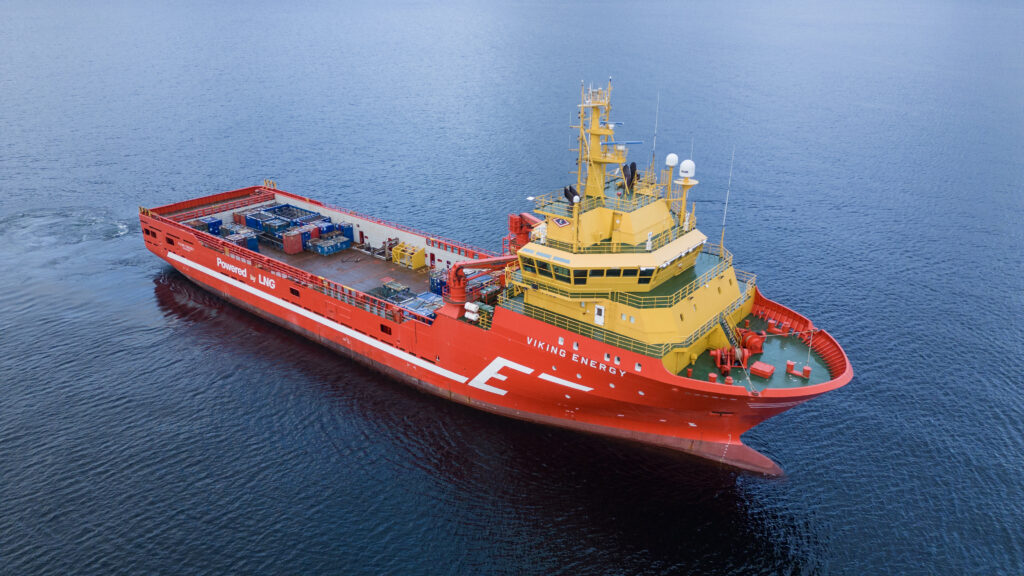Environmental impact
The overall goal of the Apollo project is to bring to its full technical maturity and commercial readiness the use of ammonia engines for the waterborne transport sector.
This will allow to dramatically reduce GHG emissions and other pollutants, such as SOx, while generating new opportunities in the retrofitting of existing vessels, construction of new vessels and the production and bunkering of ammonia for ships.
The Apollo engine will replace at least 70% of its current fuel with ammonia, lowering the GHG emissions by 70% or more.
The Apollo solution can be adapted to all types of vessels, both on the Norwegian shelf, and internationally.

Flexible solution
The Apollo solution will be flexible, so ship owners, ship designers, shipyards, classification agencies and insurance companies can quickly adopt it into their decision-making processes. The consortium will prepare the business case for ammonia in the waterborne transport sector, from the production of green ammonia to its use in different ships on the European scale.
Objectives
The project is developed to closely answer the HORIZON-CL5-2022-D5-01-04 topic of transformation of the existing fleet towards greener operations through retrofitting (ZEWT Partnership).
1) Successful large-scale demonstration of the use of dual-fuel ICE (ammonia-based) in an existing vessel;
2) Complete first classification under DNV “Gas fuelled, Ammonia”;
3) 70% reduction of CO2 emissions and NOx emissions below 2.4 g/kWh from vessel
operations;
4) Complete retrofitting solution to operate on ammonia, through development of safe ammonia storage and operation, including both deck load or below deck tanks; 5) Demonstrate the retrofit in replicators in other two vessels with different use (dredging and offshore construction) and validate feasibility for scaling;
6) Support to the expansion of the ammonia bunkering network in the North Sea and beyond, obtain 100% green ammonia for the project’s needs;
7) Validated business case for ammonia as a ship fuel with operational expenditures <130% from baseline by project end.
Experienced partners
The Apollo project benefits from the large experience of the consortium, including ship owners and operators, end-users, experts in propulsion systems, ship designers and safety experts.
The project results will be deployed in the Eidesvik vessel Viking Energy, and its operation will be demonstrated in live operations for Equinor in the North Sea.

Innovation areas
Ammonia engine
The ammonia engine is an innovative solution using ammonia as a clean fuel source, it drastically reduces carbon emissions during combustion. Thought it has been tested and validated in laboratory, no test in real environment has been performed yet. Testing the technology on an offshore vessel will be an important step to validate the performances.
The demonstrator will prove that the ammonia engine works in an operational environement and suggest how surrounding innovation barriers such as missing fuelling infrastructure can be solved.
The project will increase its impact by taking the core example developed in the demonstrator and transfer experiences to a much larger audience. This will be done through the replication phase, where we both do a socio-technical analysis and feasibility studies on two additional vessel types to bring relevance to a broad set of use cases.
Green ammonia
For the demonstrator vessel green ammonia will be used as fuel. By demonstrating the need for green ammonia as a maritime fuel the project will support further increase in green ammonia production capacity in the years to come, which will in turn lower costs and thus strengthen the position for ammonia as one of the preferred future zero emission fuels for the maritime industry.
Ammonia is already transported on a large scale, and it is supported by most chemical tankers.
The Apollo project will support the expansion of the ammonia bunkering network inthe North Sea and beyond.
The replicators
The Apollo project will ensure replicability and scalability of the Apollo ammonia fuelled ship solution by completing studies on operational, design and infrastructure requirements. It will particularly include a feasibility study to demonstrate the retrofit in replicators in other two vessels with different use (Dredging and offshore construction). The Apollo solution will be flexible so ship owners, ship designers, shipyards, classification agencies and insurance companies can quickly adopt it in their decision making processes.
